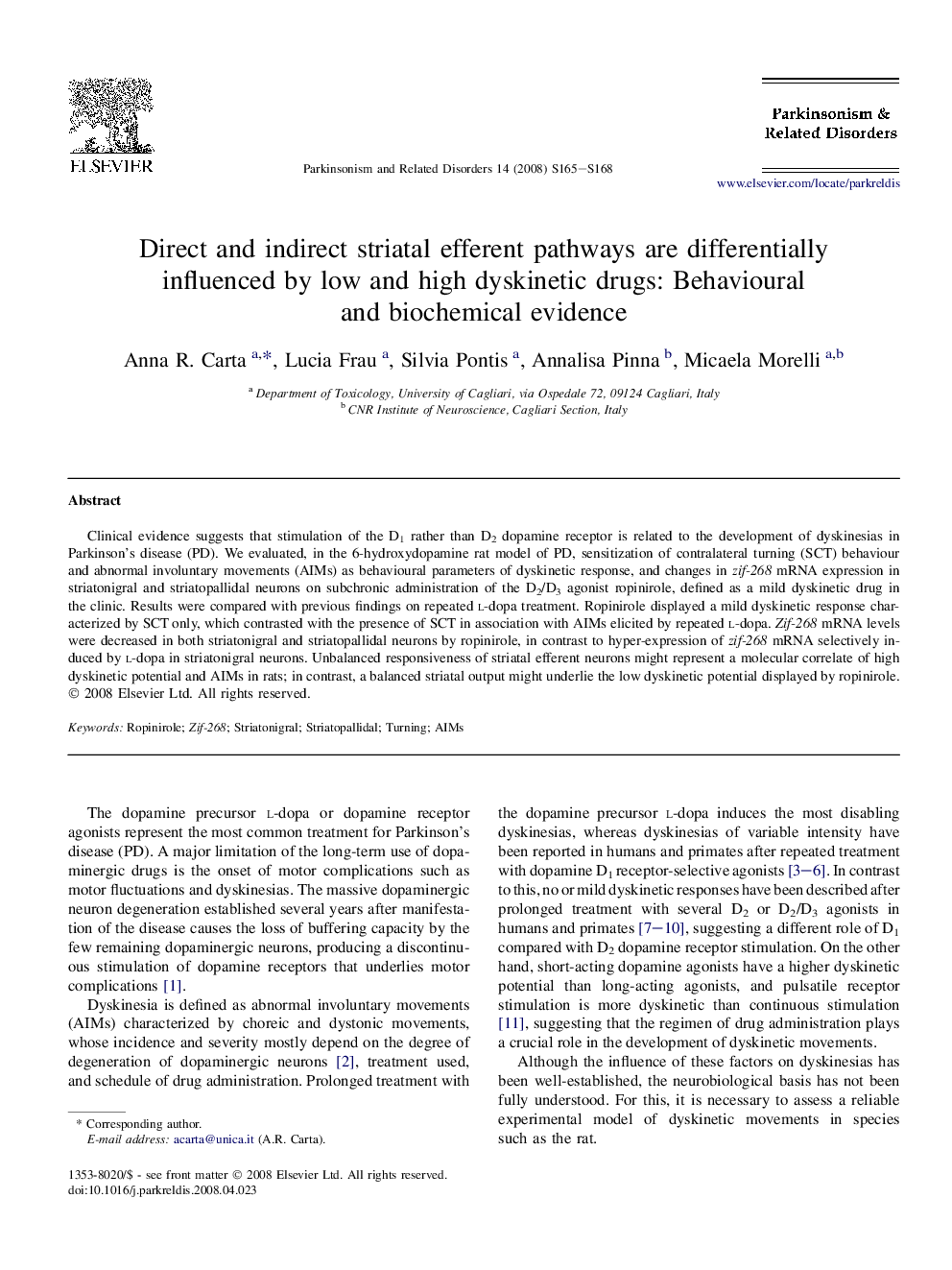| Article ID | Journal | Published Year | Pages | File Type |
|---|---|---|---|---|
| 1921724 | Parkinsonism & Related Disorders | 2008 | 4 Pages |
Clinical evidence suggests that stimulation of the D1 rather than D2 dopamine receptor is related to the development of dyskinesias in Parkinson's disease (PD). We evaluated, in the 6-hydroxydopamine rat model of PD, sensitization of contralateral turning (SCT) behaviour and abnormal involuntary movements (AIMs) as behavioural parameters of dyskinetic response, and changes in zif-268 mRNA expression in striatonigral and striatopallidal neurons on subchronic administration of the D2/D3 agonist ropinirole, defined as a mild dyskinetic drug in the clinic. Results were compared with previous findings on repeated l-dopa treatment. Ropinirole displayed a mild dyskinetic response characterized by SCT only, which contrasted with the presence of SCT in association with AIMs elicited by repeated l-dopa. Zif-268 mRNA levels were decreased in both striatonigral and striatopallidal neurons by ropinirole, in contrast to hyper-expression of zif-268 mRNA selectively induced by l-dopa in striatonigral neurons. Unbalanced responsiveness of striatal efferent neurons might represent a molecular correlate of high dyskinetic potential and AIMs in rats; in contrast, a balanced striatal output might underlie the low dyskinetic potential displayed by ropinirole.
